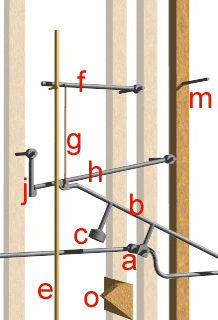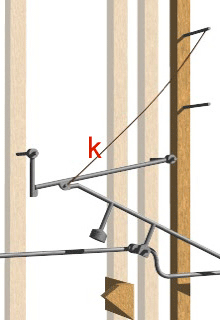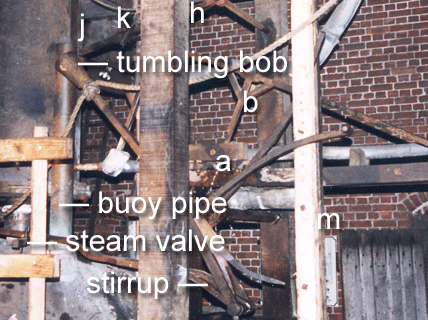Unlike later engineers like James Watt, Newcomen had no access to any scientific knowledge of thermodynamics. At the time, it was simply assumed that the amount of steam produced by a boiler was dependent on the amount of water contained in the boiler. As a result the first boilers were usually made tall and thin with little heating area, but better designs were used later.
Because the steam was only being produced slowly Newcomen had to use a pressure sensing 'buoy' (not 'boy' as in the apocryphal stories) as part of the first control mechanism.

The buoy mechanism was no longer needed when boilers could constantly produce sufficient steam, and was usually removed or tied up. The engines would then run much faster with the detent or 'Scoggan' pulled up directly by the 'Potter cord'.


a injection cock (water valve). b 'F' lever. c 'F' lever weight. f buoy rod tappet. g buoy tappet to detent cord. h detent or 'Scoggan'. j detent stop. k 'Potter' cord to detent. m plug rod (attached to beam). o 'F' lever stop.
(Figure annotation as in 'Thomas Newcomen' by LTC Rolt, 1963)